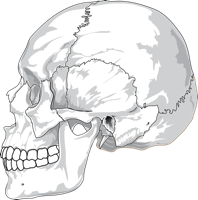
Late one evening in 1990 at the Ketambe Research Station in Indonesia's Gunung Leuser National Park, I sat transcribing notes by the light of a kerosene lamp in my hut on the banks of the Alas River. Something was bothering me. I had come to gather data for my dissertation, documenting what and how the monkeys and apes there ate. The idea was to relate those observations to the sizes, shapes and wear patterns of their teeth. Long-tailed macaques have large incisors and blunt molars—teeth built for eating fruit, according to the received wisdom. But the ones I had been tracking for the past four days seemed to eat nothing but young leaves. I realized then that relations between tooth form and function are more complicated than the textbooks suggest and that the sizes and shapes of an animal's teeth do not dictate what it eats. This might sound like an esoteric revelation, but it has key implications for understanding how animals—including humans—evolved.

